The stock market is throwing a bash and everyone’s invited! On Monday, the S&P 500 notched its 30th record close of the year, and we’re not talking about a small gathering – we’re talking about a full-blown celebration!
The S&P 500 rose a whopping 0.8%, while the tech-tastic Nasdaq Composite jumped almost 1% to score its sixth consecutive record close. And don’t even get us started on the Dow Jones Industrial Average, which gained a cool 0.5%. It’s like the whole market is dancing to the same beat!
So, what’s behind this tech-fueled rally? Well, Wall Street’s top experts are revising their year-ahead targets for the S&P 500, and they’re getting more optimistic by the minute! Evercore ISI is predicting a year-end price target of 6,000, while Goldman Sachs is going for 5,600. And guess what? The benchmark index just topped the 5,400 level for the first time last week and closed Monday at 5,473. That’s like breaking the piñata and finding a pot of gold inside!

Now, you might be wondering what’s on the agenda for this week. Well, with last week’s inflation reports and Federal Reserve meeting out of the way, things are looking a bit quieter. But don’t worry, we’ve still got some excitement coming our way! On Wednesday, we’ll get a glimpse into the health of the US consumer with the retail sales report. It’s like getting a sneak peek at the birthday presents!
And speaking of presents, it looks like the Federal Reserve might be giving us a little something special soon. Federal Reserve Bank of Philadelphia President Patrick Harker hinted at a possible rate cut in 2024, saying, “If we start to see several months of data moving in the right direction, I could see taking action.” Minneapolis Fed president Neel Kashkari also suggested that a December rate cut could be the Fed’s only move this year.
So, what does it all mean? Investors are pricing in around a two-thirds chance that the central bank will start cutting rates by September, according to the CME FedWatch tool. It’s like the whole market is holding its breath, waiting for the Fed to make its next move. So, are you ready to join the party? With stocks hitting new highs and the good times rolling, it’s the perfect time to get in on the action! Just remember to always keep your cool, do your research, and invest wisely. Happy investing, and let’s keep this party going!
Red Lobster’s Financial Woes: A Decade of Decline 📉
Red Lobster, the iconic American seafood chain, has filed for bankruptcy, marking the end of an era for the beloved brand. But the story of its decline is more complex than just blaming Covid-19 or corporate greed. A combination of factors, including changing consumer tastes, burdensome lease agreements, and a series of poor business decisions, have driven the company into financial despair over the past decade. The company’s struggles began in the early 2000s, with sales slumping and a failed attempt to upscale its menus. The sale of the company to private equity firm Golden Gate Capital in 2014 only exacerbated the problems, as the new owners used a sale-leaseback strategy to raise capital, leaving the company with fixed real estate costs and little room for error.
Thai Union, a seafood producer, later acquired a stake in the company, but its efforts to turn things around were ultimately unsuccessful. The Covid-19 pandemic dealt a devastating blow to the restaurant industry, and Red Lobster’s sales tanked. Despite efforts to refinance its debt and cut costs, the company was unable to recover.

Now, Fortress Investment Group, a Wall Street firm, is the most likely savior for Red Lobster. Fortress is examining the company’s prospects, drilling down on how each restaurant performs and identifying regions and demographics that would best support a comeback. The firm wants to cut Red Lobster loose from its burdensome lease agreements and is working to identify a path forward for the struggling chain. The outcome of Red Lobster’s bankruptcy proceedings will have implications for the US economy, as the company’s struggles reflect the changing tastes and habits of American consumers. The restaurant industry as a whole is facing challenges, with rising costs and declining sales forcing many chains to reevaluate their business models. Red Lobster’s fate serves as a cautionary tale for other struggling restaurants, highlighting the importance of adapting to changing consumer preferences and managing debt wisely.
GameStop Stock Plummets 15% as CEO Cohen Provides Few Details on Strategy 👀
GameStop’s annual shareholder meeting on Monday was highly anticipated, but CEO Ryan Cohen’s brief remarks left investors disappointed, causing the stock to fall as much as 15%. Cohen emphasized the company’s focus on achieving profitability, citing a smaller network of stores and cost reductions. However, he provided few details on the company’s strategy going forward, leading to investor uncertainty.

The meeting was postponed last week due to technical issues, and Cohen’s lack of transparency on the company’s plans only added to the frustration. GameStop has been capitalizing on recent rallies, raising over $3 billion in proceeds from stock offerings over the past month, but investors are seeking more clarity on the company’s direction. The resurgence of retail trader Keith Gill, also known as Roaring Kitty, has contributed to the volatility in GameStop’s stock. Gill, who sparked the meme frenzy in 2021, recently posted on social media, causing the stock to rally 180% over two days. However, his subsequent YouTube livestream and GameStop’s early release of quarterly results led to a 40% decline in the stock.
Gill has expressed confidence in CEO Cohen’s ability to turn the company around, stating that investors should focus on Cohen’s management team. Despite the uncertainty, GameStop’s strong balance sheet, with over $3 billion in cash, provides a strategic advantage in times of economic uncertainty.




